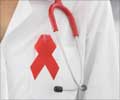- HIV Treatment - (https://aidsinfo.nih.gov/education-materials/fact-sheets/21/52/when-to-start-antiretroviral-therapy)
- Nucleoside Reverse Transcriptase Inhibitors - (http://www.hiv.va.gov/patient/treat/nrtis.asp)
- How is HIV Treated? - (https://www.aids.gov/hiv-aids-basics/just-diagnosed-with-hiv-aids/treatment-options/overview-of-hiv-treatments/)
- Antiretroviral Therapy - (http://www.hivguidelines.org/clinical-guidelines/adults/antiretroviral-therapy/)
- HIV/AIDS - (https://www.drugabuse.gov/publications/research-reports/hivaids/what-haart)
- Adverse Effects of Highly Active Anti-Retroviral Therapy (HAART) - (http://www.omicsonline.org/adverse-effects-of-highly-active-anti-retroviral-therapy-haart-1948-5964.1000037.php?aid=3613)
What is HIV/AIDS?
Human Immunodeficiency Virus (HIV) is a retrovirus which is capable of causing AIDS (Acquired Immuno Deficiency Syndrome). HIV weakens the body’s immune system resulting in infections and cancer-related disorders. There is no effective cure for HIV but with proper medical care and treatment, the disease can be controlled.
What Is Antiretroviral Therapy (ART)?
Treatment of HIV with anti-viral medications is referred to as antiretroviral therapy (ART). Antiretroviral drugs lower the viral content of the bloodstream. They do not cure HIV infection but help to prevent viral replication. This therapy improves the patient ‘s life and decreases the risk of HIV transmission.
What are the Drugs Used in Antiretroviral Therapy (ART)?
Anti-retroviral therapy includes the following classes of drugs:
- Nucleoside reverse transcriptase inhibitors: These drugs prevent HIV replication by blocking the reverse transcriptase enzyme that converts RNA to DNA. They include lamivudine, zidovudine, didanosine, emtricitabine, tenofovir, stavudine and abacavir.
- Non-nucleoside reverse transcriptase inhibitors: Non-nucleoside reverse transcriptase inhibitors also inhibit the reverse transcriptase enzyme. They include drugs like efavirenz, nevirapine, delavirdine, etravirine and rilpivirine which are taken in combination with other drugs to treat HIV infections.
- Protease inhibitors: Protease inhibitors are drugs which inhibit the protease enzyme of the HIV virus that is necessary for viral replication and infectivity. Drugs like saquinavir, ritonavir, nelfinavir, indinavir and amprenavir are some of the protease inhibitors.
- Integrase inhibitor – The integrase inhibitors raltegravir, elvitegravir and dolutegravir prevent the replication of the HIV virus.
- CCR5 (Chemokine receptor type 5) antagonist – A CCR5 antagonist prevents the entry of the HIV virus into the CD4 cells. Maraviroc is an approved CCR5 antagonist, also called entry inhibitor.
- Fusion inhibitor –A fusion inhibitor prevents the entry of the HIV virus into the CD4 cells. Enfuvirtide is an approved fusion inhibitor.
Other drugs like cobicistat are used along with anti-HIV drugs to improve their effectiveness.

What is HAART?
Highly active antiretroviral therapy (HAART) is a combination of medications used to treat HIV infections. It was first introduced in 1996. The combination of drugs is mainly based on the virus strain, viral load (It is a measure of the number of HIV viruses present in the bloodstream), CD4 cell count and presence of other diseases. The combination reduces the chances of the virus developing resistance to treatment.
Which Patients Should Receive ART?
All patients who are infected with the HIV virus should receive ART. The HIV-negative sexual partners of HIV positive individuals should also receive treatment. In particular, anti-HIV treatment should be started immediately in the following patients with HIV:
- Patients who develop symptoms of AIDS. AIDS is defined as the presence of a CD4 count of less than 200 cells/mm3, or the presence of a life-threatening condition like cervical cancer or tuberculosis
- Patients who have associated hepatitis or other infections or diseases
- Patients who have been infected with HIV within the previous six months
As per the current United States Department of Health and Human Services Guidelines:
- The antiretroviral therapy is recommended for HIV patients to reduce the risk of disease progression.
- The antiretroviral therapy is used for the prevention of HIV transmission.
- HIV patients who are taking ART should be able to commit to treatment. They must understand the importance of the therapy by knowing its benefits and risks. They have to understand that if they do not take the medications on a regular basis, the virus can develop resistance to the drug, and make treatment more difficult. They may want to postpone therapy and doctors may decide on treatment on a case-by-case basis based on clinical or psychosocial factors.
- Pregnant women

How to Choose HIV Regimen?
HIV medications are chosen based on
- Health conditions and diseases that HIV patients might have like cancer or other opportunistic infections
- Drug resistance
- Intake of other medications which might interact with the HAART drugs
- Medication cost
- Availability of a single combination pill which enhances the ease of taking the combination.
Some approved anti-HIV drug regimens
- Zidovudine + Lamivudine + Abacavir
- Elvitegravir + Cobicistate + Emtricitabine + Tenofovir
- Tenofovir + Emtricitabine + Efavirenz
Benefits of Antiretroviral Therapy
- Helps to restore the functions of the immune system.
- Improves the overall health and prolongs life span.
- Suppresses the virus replication
- Helps to reduce HIV transmission (even during pregnancy ART helps to reduce mother-to-child transmission)
Risks of Antiretroviral Therapy
- Possibility of drug resistance
- Adverse effects of the HIV medication
- Drug toxicity which may even harm the fetus.
Consequences of HAART
Each class of drug in the antiretroviral therapy will have its side effects
Nucleoside reverse transcriptase inhibitors – High cholesterol levels, lactic acidosis, lipodystrophy (redistribution of fat)
Non-nucleoside reverse transcriptase inhibitors - Rash, liver damage, lipid abnormalities
Protease inhibitors - Gastrointestinal intolerance, high blood glucose levels and lipid abnormalities
Other complications may include osteoporosis, osteonecrosis (bone death), inflammation of the muscle, rhabdomyolysis (breakdown of skeletal muscle), liver disorders and coronary heart diseases.

Some Antiretroviral Drug Combinations that Should be Avoided:
- Zidovudine + Stavudine since zidovudine may decrease the conversion of stavudine to its active form and reduce its effectiveness.
- Stavudine + Didanosine as the combination may result in toxic effects like inflammation of pancreas and liver, peripheral neuropathy (problem in the nerves of the hand and feet), and metabolic disorder (lactic acidosis).
- Lamivudine + Didanosine are not found to be clinically additive, which means the effects of the two drugs when taken together were not equal to the effects of the drugs when taken separately.










